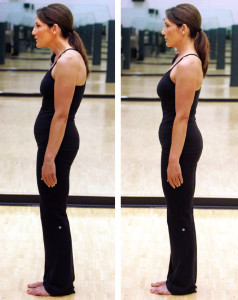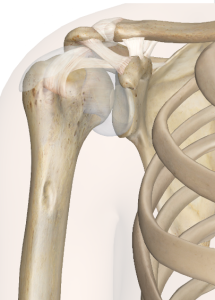There are a plethora of studies out now about how important exercise is to one’s health and longevity. Many gyms count on people signing up and then dropping out. This usually happens in January, (new year’s resolutions) and early spring, when we want to look good for the summer. To stay with an exercise program, it’s really important to find what you enjoy doing the most, what brings the most pleasure in your body. For many it’s running, walking, dance, tennis, or swimming. Whatever you choose, how you begin and end is important for obtaining the most benefit from your exercise.
Before you start your exercise, pause and check in with your alignment. Many of us get caught up in keeping our minds busy/entertained while exercising. As a culture we seem to multi-task. It’s actually better for your body/mind to just be with the movement, to be aware of the changes in your body as you move. So stand against a wall and tune into your posture. Make note where you feel tight, how even is the weight distribution is in your feet, how your back is touching the surface, if both sides of your hips are touching. Do your shoulder blades touch? Take a minute to feel your feet, do a few foot rolls. Lengthen your spine, let your head move in the opposite direction from your sacrum. Roll your shoulders back and let your body take up more space. Widen as well as lengthen.
Now start with whatever exercise you have planned. When you are done, do the same thing; stand against a wall and notice what has changed. Is your posture giving your brain the message that it’s more relaxed, more aligned? Taking the time to notice will give you more information about your body and how the exercise is impacting you.
I will be offering classes combining Alexander and Cantienica this fall. Cantienica, a fitness work-out, is very popular in Europe and is now being presented here in the Bay Area. The founder/originator, Benita Cantieni is presenting a training here at the end of October. Cantieni describes her system as a “logical anatomy” for laypeople, an instruction for self-healing, or as viviatomy, the science of the living body. I find the work extremely helpful for feeling connected to and directing from my core. One way it differs from other workouts is its focus and understanding of activating the pelvic floor. This is something most people have very little understanding of in any activity. Knowing how to engage the pelvic floor will improve your posture and strengthen your core, as well as prevent many problems that can come with aging. Ms. Cantieni’s web site is www.cantienica-method.com. Her book Tiger Feeling is available in English as an e-book. I highly recommend it.
Please contact me if you want more information or to take the class. 415-948-8523
All the Best,

 When my shoulders are tight or raised it usually means I’ve shortened the distance between my head and sacrum. This leads to compression along the spine as well as the shoulders taking over and trying to carry me around. Since the relationship of the head to the spine is called ‘primary control’ in Alexander terms, you know if this relationship is off then the entire structure is going to have trouble. Thus starting with bringing the head/spine in proper relationship is the first step in bringing your shoulders to a relaxed position.
When my shoulders are tight or raised it usually means I’ve shortened the distance between my head and sacrum. This leads to compression along the spine as well as the shoulders taking over and trying to carry me around. Since the relationship of the head to the spine is called ‘primary control’ in Alexander terms, you know if this relationship is off then the entire structure is going to have trouble. Thus starting with bringing the head/spine in proper relationship is the first step in bringing your shoulders to a relaxed position. Another unconscious habit that can contribute to shoulder problems is lifting and pulling up and in at the shoulder joint. The shoulder joint is made up of the clavicle and shoulder blade coming together to form a round socket. The arm bone, the humerus, fits into this socket and too often we think of the head of the humerus as part of the joint. This thinking may be what causes us to pull up and in with the arm, creating more tension in our shoulders. Learning to recognize this habit is a step towards reducing the stress and tension we are putting on this joint. Learning to let the elbows drop will give more space to the joint. This action will also reduce wear and tear on the shoulder.
Another unconscious habit that can contribute to shoulder problems is lifting and pulling up and in at the shoulder joint. The shoulder joint is made up of the clavicle and shoulder blade coming together to form a round socket. The arm bone, the humerus, fits into this socket and too often we think of the head of the humerus as part of the joint. This thinking may be what causes us to pull up and in with the arm, creating more tension in our shoulders. Learning to recognize this habit is a step towards reducing the stress and tension we are putting on this joint. Learning to let the elbows drop will give more space to the joint. This action will also reduce wear and tear on the shoulder.